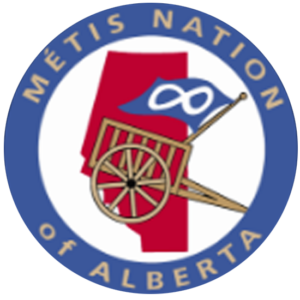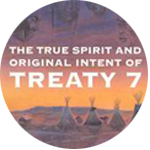Treaties & Agreements
In this section, you will begin to learn about Treaties and Treaty relationships, Inuit Land Claim Agreements and Métis Land Agreements.
Introduction
In this section, you will learn begin to learn about about Treaties and Treaty relationships, Inuit Land Claim Agreements and Métis Land Agreements.
Treaty and land agreements between Indigenous Peoples, Crown and Canadian Government shaped the past, present and will continue to shape the future. Indigenous Peoples have never surrendered their sovereign rights and will continue to seek justice through legal, education, health care and all systems of governance that affect nations, communities and individuals.
When considering learning about the spirit and intent of Treaty, it is important to understand that it is a lifelong learning journey that is best undertaken with the guidance of First Nations Elders and Knowledge Keepers. Treaties between First Nations existed prior to European contact, and Indigenous People have an understanding of Treaty that contrasts in many ways to the written version of Crown and First Nations Treaties. There is much more to Treaties than what is written in the Crown’s version of these documents.
Understanding the spirit and intent of the Treaty is integral to developing a holistic understanding of Treaties. Spirit and intent refers to the unwritten oral promises as well as the spiritual nature of Treaties as understood by First Nations. Treaties were not entered into by all Indigenous Peoples across what is now Canada. There are many First Nations groups that did not enter into the Treaty. Métis were excluded from Treaty negotiations and eligibility to receive Indian Status under the Indian Act, with the exception of Treaty 3. Métis and Inuit were intentionally excluded from Treaty negotiations and have worked diligently to assert their sovereign inherent rights as Indigenous Peoples on this land.
The phrase “we are all treaty people” is often used to emphasize the need for all Canadians to live up to the intent of the treaties which is inclusive of peaceful relationships, friendship and sharing for the mutual benefit of all. Not all Indigenous Peoples entered into Treaty, yet the essence of Treaty relates to co-existing in a good way and resonates through the statement “we are all treaty people”. Treaties are two sided agreements and when living on Treaty territories, all citizens have treaty rights and responsibilities although the interpretation of these rights and responsibilities might often not be fully understood. The phrase “honour the treaties” is in alignment with the spirit and intent of treaties as understood and entered into by First Nations. Many treaty promises and obligations continue to not be honoured and this is evident “honour the treaties” through past and current social contexts such as mass boil water advisories on reserves, land dispossession, undisturbed hunting, fishing, and harvesting rights, ecocide, environmental racism, lack of access to nutritious food and equitable healthcare, lack of housing, and continued violence and racism projected on Indigenous peoples.
Treaty
There are diverse understandings of numbered Treaties. Treaties are Nation to Nation agreements between sovereign First Nations and the British Crown, and they predate the creation of the province of Alberta. First Nations entered into Treaties with a view to the future and in good faith based on their understandings of what the spirit and intent of treaties are meant to entail. Many Treaties were entered into under false, deceptive, and forceful tactics such as starvation through the decimation of the Buffalo, violence, cand coercion. First Nations Treaty negotiators believed their people and generations to come would be cared for, respected, and worked with rather than against, and they never agreed to surrender any land. Canada History, the Numbered Treaties:
“Treaty-making was historically used among First Nations Peoples for such purposes as inter-tribal trade alliances, peace, friendship, safe passage, and access to shared resources within another nation’s ancestral lands. Respect and reciprocity were foundational principles that resulted in tribal alliances among nations.”1
Treaty was not a new concept for First Nations — only the European ideas of treaties were new to First Nations. Treaties were self-serving deals used to strip Indigenous Peoples of land to non-Indigenous Peoples rather than sacred agreements between sovereign nations.2
Sovereign Nations
First Nations entered into a series of treaties with the British Crown (later the Government of Canada) beginning in the early 1600s. The Office of the Treaty Commissioner explains that “the Indigenous Peoples/nations are considered to be the original inhabitants of North America. They were sovereign nations and exercised their powers to negotiate and agree to international arrangements.3 At the time of numbered treaty negotiations lieutenant governors who were representatives of the Queen of Britain would assist in negotiating with First Nations.4 During this time, “the Queen understood the First Nations Peoples to be sovereign and independent nations with full title and occupancy of the land, therefore, it was appropriate to enter into treaties to fully acknowledge their title to the land.”5 Treaties were solidified through ceremony. Both sides entered into Treaty through ceremony as well as through the marking of an “X” on English written paper documents that were not translated fully within the First Nations language.
Truth, honor, respect, honesty, integrity, family, reciprocity, and relationships are all integral to First Nations understandings of the Treaty and are inherent values embedded in the Pipe Ceremony that was included in Treaty negotiations. Treaties continue to be relevant today. First Nations always wanted to protect traditional lands, resources, the values of mutual respect, and their ways of life while ensuring peace and friendship. Treaties were understood differently by both parties due to differing world views and underlying intentions.
Perspectives
A Cree perspective of “the treaties were based on the First Nations Peoples’ principles: miyowîcêhtowin (getting along with others), wîtaskêwin (living together on the land) and pimâcihowin (making a living).”6 Treaties provided both parties with the means of achieving survival and socio-economic stability, anchored on the principle of mutual benefit.7 Elders continue to pass on the oral understanding of Treaties as being peaceful relationships rather than surrendering of land.8 Treaties as understood in relation to the concept of Wîtaskêwin (Cree), coexisting peacefully by living together on the land, were what First Nations were prepared to enter into with the Crown.9 First Nations’ worldviews include the relationship with the land which informed politics, spirituality, and economy in contrast to Europeans view as the land being something to be exploited, controlled, and dominated.10 Language and knowledge transmission differences (oral versus written), as well as coercion and colonization tactics, resulted in treaty misunderstandings and continued unfulfilled promises and methods to eradicate Treaty status descendants
The Treaty Coin provides an example of visual representation of treaty relationships. The gifting of treaty medals was symbolic of shared promises and working together. The visual symbolism on the circular treaty coin gives the impression that both parties are on equal ground and entering a relationship that was supposed to be built on mutual respect. The circular shape of the medal is a Reflection of nature, the circle of life, creation and ceremonial. The sun, land and water on the coin could be symbolic of the interconnection to the natural world as well as the statement “as long as the sun shines, the grass grows and the rivers flows”. Including tipis on the coin can be interpreted as the commitment to ensure that traditional ways of life inclusive of methods to educate, govern, child-rearing and connection to the land will be maintained. Tipis are also symbolic of the uplifting and valuing of women, family and kinship connections.
Numbered Treaties
There are eleven Numbered Treaties in Canada that were entered into between 1871 and 1921. Treaty 4, 6, 7, 8 and 10 are within what is now Alberta with all but Treaty 7 extending beyond provincial borders. Treaty boundaries are not confined to provincial borders, in fact provincial borders came into effect after Treaties were enacted. Treaty 4 (1874) includes the Nehiyawak (Cree), Nakoda, and Anishnabe. It is primarily in Saskatchewan yet extends into the lower southeast portion of Alberta and into Manitoba. Treaty 6 (1876) includes central Alberta and Saskatchewan and includes the Nehiwayak (Cree), Nakoda, and Anishnabe. Treaty 7 (1877) includes the Blackfoot Confederacy, the Sarcee, and the Nakoda. It is located south of the Red Deer River and extends to the southern Alberta border. Treaty 8 (1899) covers northern Alberta and portions of B.C and the Northwest Territories. It includes Nehiyawak (Cree)Dene, and Dane-zaa. Treaty 10 (1906) is located in northern Saskatchewan with a small portion in east-central Alberta. The First Nations that entered into the Treaties did so for a variety of factors, yet all were entered into with a view to the future. Each Treaty is unique and reflects the concerns that First Nations leaders had for their people. Aside from Treaties there are various modern day Treaties and land claims that can be further learned about and understood.
Broken Promises
Violence, sexual assault, disease, manipulation and hunger were used as a weapon to ensure Treaties were entered into, forced relocation and Scrip was taken. Promises such as peace and goodwill, food, medicine (health care), and education were made yet it is evident to this day that these promises remain unfulfilled. With lack of access to clean water and land, poor treatment in health facilities, poverty, child welfare, and a mental health crisis, it is evident that the health and well being of Indigenous Peoples are not a priority for the government. Racist attitudes and beliefs continue to permeate the education, health care, and justice system leaving Indigenous less cared for by those in positions of power and control.
Treaty Right to Education
Educational clauses included in the crown’s version of Treaties have established educational policy such as education services and a fiduciary obligation to provide educational services. During Treaty negotiations, both parties understood that education would be necessary for the well being of First Nations. Education to First Nations was holistic, lifelong, with traditional nature-based survival methods, ceremonies, learning through language and relationship. The Crown’s idea of education was in stark contrast with Residential Schools being evident of what education for Indigenous Peoples meant to them. 11
The Royal Commission on Aboriginal People state:
Education must reflect the structure, practices, and vision of First Nations communities. Education is a treaty and constitutional right to be treasured and a process that enables First Nations to blend traditional purposes of education, language, and culture with the skills necessary for collaboration in today’s global society. The issue of the demand for the recognition of education as a treaty right will not dissipate until profound educational changes occur including appropriate funding and effective control beyond merely administrative responsibility for a poorly funded and externally directed education services. First Nations education must reflect the language, traditions, and culture of their communities and receive the resources necessary to ensure quality educational programming, and to ensure educational attainment and foster the “crucial skills for governance and economic self-reliance.12
The Assembly of First Nations (formerly known as the National Indian Brotherhood) created an education policy “Indian Control of Indian Education” in 1972. The policy addressed disparities in education for Indigenous students while citing recommendations for improvement. These recommendations included the importance of Indigenous communities controlling education, more Indigenous educators, culturally relevant curriculum and teaching resources, Indigenous language instruction, and traditional culture being taught in schools. These recommendations continue to be important and necessary today. For Indigenous students to feel a sense of belonging in schools and achievement much needs to be improved.13 In 2009, 15 year old Shannen Koostachin, addressed Parliament to put forward continued demands for better education, schools, and resources for Indigenous children. Upholding sovereign rights to education continue to be a priority.
Divergent Worldviews
Treaty negotiations were rife with instances of coercion and misinterpretation by the Crown, and the written text and oral promises often did not align. These conditions at negotiation, as well as fundamentally divergent worldviews, have led to ongoing disputes around unfulfilled obligations. One example of unfulfilled obligations includes upholding access to opportunity for healthy living (e.g., clean drinking water, equitable food access, equitable education, equitable health care, and peaceful coexistence). Many Nations have been successful in their court cases to get their Treaty rights recognized.14 However, gaps continue to exist in funding for services that fall under Treaty obligations, including education.15 Treaties are still in force and will continue to be “for as long as the sun shines, the rivers flow and the grass grows” according to the numbered Treaties. To learn more about Treaties, connect with First Nations leaders through reserves or through governing bodies such as Alberta First Nations Information Governance Centre, Confederacy of Treaty Six, Treaty 8 First Nations of Alberta, and Treaty 7 First Nations Chiefs Association.
Inuit Land Claim Agreements
Inuit Nunangat is an Inuktitut term for the homeland that includes the four Inuit regions: Nunatsiavut (Northern Labrador), Nunavik (Northern Quebec), Nunavut and the Inuvialuit region of the Northwest Territories. Inuit Nunangat encompasses approximately 35 percent of Canada’s landmass and 50 percent of its coastline.16 The Crown did not enter into treaties with the Inuit, who were purposefully excluded as “Indians” under the Indian Act. On April 5, 1939, the Supreme Court of Canada unanimously ruled that Inuit were Indians according to the British North America Act of 1867 and therefore subject to the Indian Act. This made Inuit health, welfare, and education the responsibility of the federal government, although Canada was reluctant to take on this role.”17 In 1945, following the end of WWII, concerns over Canada’s sovereignty in the Arctic turned the nation’s attention northward, and many Inuit were forced to relocate to the high Arctic.18 Since 1975, Inuit have many land claim agreements.
- The James Bay and Northern Quebec Agreement (1975) and
- The Nunavik Inuit Land Claims Agreement (2006).
- The creation of the Inuvialuit Settlement Region: the Inuvialuit Final Agreement (1984).
- The creation of Nunavut: the Nunavut Land Claims Agreement (1999).
- The creation of Nunatsiavut: the Labrador Inuit Land Claims Agreement (2005).19
Key aspects of these Land Claims Agreements are the preservation and promotion of Inuit language and culture, protection of the environment and wildlife, including rights to hunt, fish, and trap. As well as responsibility for the economic development, education, health care, justice, and social programs within their respective regions.
These Agreements ensure that the Inuit and Inuvialuit benefit from their years, and in some cases, decades of negotiations with Canada to fulfill their rights to self-determination via comprehensive Land Claims Agreements.
Métis Land Agreements
The Royal Proclamation of 1763 recognizes original Indigenous title to the land now known as Canada.20 The Manitoba Act of 1870 set aside 1.4 million hectares for Métis land grants intended for “the extinguishment of the aboriginal title.” This land was to be distributed to “children of half-breed heads of families.”21 The Métis were not included in Treaty negotiations nor eligible to receive Status under the Indian Act. “Canada’s North-West Half-Breed Commission was established to settle the land claims of the Métis. To have Métis relinquish their rights to their land, the Government of Canada created the Scrip System.”22 Scrip Commission and other officials traveled across the Prairies issuing certificates (scrip) for 140 or 260 acres of land or dollars, depending on each applicant’s circumstances.23 Applicants had no say in the location of their land, leading to a disconnection from home and community. Fraud was a widespread practice throughout the scrip process, and land speculators often deceptively traded Métis People meager amounts of money for their scrip or posed as Métis to get Métis land, leaving many Métis People destitute. In response, the Canadian government shortened the statute of limitations on fraud associated with scrip so that Métis could not pursue justice rather than prosecute the offenders.24 This ultimately offered free rein and empowerment to settlers to strip Métis of their land and rights without consequence.
Many landless Métis began to establish homes and communities in ditches or road allowances, and they came to be known as Road Allowance People.25 In Alberta, the injustice and often destitute conditions that Métis People lived in sparked outrage among Métis leaders who established the Métis Association of Alberta (MAA) in 1928 to advocate for the rights of Métis in Alberta. This organization is the formal precursor to the Métis Nation of Alberta today. They lobbied the provincial government to take action to improve living conditions for Alberta Métis. This led to the establishment of the Ewing Commission, which made recommendations that the province enact the Métis Betterment Act and eventually led to the creation of Métis settlements.26 The Alberta-Métis Settlements Accord (1989) was aimed at securing a Métis land base for future generations, local autonomy, and economic self-sufficiency. 12 Métis Settlements in Alberta were formed with 4 rescinded by the Government of Alberta. 8 remain: Buffalo Lake, East Prairie, Elizabeth, Fishing Lake, Gift Lake, Kikino, Paddle Prairie and Peavine. Métis live on these 8 Settlements and across all of Alberta.27
The Alberta-Metis Settlements Accord is one example of many Agreements between the Métis Nation and the federal and provincial Governments of Canada. Examples of some other important Agreements include Canada-MNA Self-Government Agreement (2019), Parks Canada – Métis Nation of Alberta Agreement, Government of Alberta – Métis Nation of Alberta Parks Agreement, Métis Harvesting Agreement, and Métis Nation of Alberta–Government of Canada Framework Agreement for Advancing Reconciliation. Métis Government Recognition and Self-Government Agreement . To learn more about Métis rights in Alberta go to the Métis Nation of Alberta website and access some of the links below.
Reflection
1. How does learning about the Spirit and Intent of Treaties and “the right to education”, impact the education of Indigenous students in your school and district and support reconciliation?
2. How are the histories and contemporary realities of First Nations, Métis, and Inuit distinct and unique in regard to the land agreements and disagreements they have made with the Crown and/or Government of Canada?
3. What have you learned /know about the Indigenous peoples in your district connection to Treaty, agreements, and claims?
4. What does the principle 6 of reconciliation mean to you in your leadership practice “All Canadians, as Treaty peoples, share responsibility for establishing and maintaining respectful relationships.”?
5. How will/does this support your relationship building with your Indigenous community?
Related Resources
ASBA Indigenous Advisory Circle Elders discuss the importance of treaties and of teaching treaty history in our classrooms today.
Treaty Talk – Sharing the River of Life is a 50 minute teaching tool to better understand our collective responsibility to treaty. The purpose of this video is to build understanding, allyship and bridges for better relationship and work together.
This feature documentary by acclaimed filmmaker Alanis Obomsawin profiles Indigenous leaders in their quest for justice as they seek to establish dialogue with the Canadian government.
Narcisse Blood speaks about Treaty 7 with interludes from the play “The Making of Treaty 7” interwoven throughout.
The Office of the Treaty Commissioner (often called the OTC), started in was created to guide both parties through their differing view on Treaties, by giving recommendations for Treaty land entitlement and education.
Shows a comprehensive list of all the agreements made between the Métis Nation of Alberta with the Provincial and Federal Government. It also includes two videos that explain what a constitution is and what self-government means.
This video shows the historical moment when all three governments, Métis Nation of Alberta, Saskatchewan and Ontario signed their Self-Government Agreements with Canada.
Scrip was an Agreement between Canada and individual Métis people that established land agreements. Unlike Treaties that were negotiated collectively, Scrip was a process aimed at individual Métis people as an offer of land agreements and/or financial settlements.
Build your foundational knowledge about Treaties and Agreements in relation to Métis Scrip presented by Zachary Davis, Métis Nation of Alberta Lawyer.
Scrip was an Agreement between Canada and individual Métis people that established land agreements. Unlike Treaties that were negotiated collectively, Scrip was a process aimed at individual Métis people as an offer of land agreements and/or financial settlements.
Explore on how to teach about Métis Scrip in your classrooms.
Scrip was an Agreement between Canada and individual Métis people that established land agreements. Unlike Treaties that were negotiated collectively, Scrip was a process aimed at individual Métis people as an offer of land agreements and/or financial settlements.
Explore on how to teach about Métis Scrip in your classrooms.
This film is inspired by the work of the Making Treaty 7 Cultural Society, a group of artists, musicians, playwrights, Elders, and technicians trying to bring the stories of Indigenous and settler relationship to the forefront.
This book examines the influence that disease, climate and government policy have had on Indigenous Peoples.
This book provides oral accounts of treaty and has been cited twice in landmark decisions by the Supreme Court of Canada since its original publication in 1979.
This book offers oral accounts of treaty from Treaty 7.
This webinar series shares information and promotes conversation about the historical and contemporary issues that relate to treaties.
This section of the Indigenous Peoples’ Atlas of Canada explores the Inuvialuit Settlement Region.
This section of the Indigenous Peoples’ Atlas of Canada explores original Inuit place names.
This document outlines basic information about Modern Treaties that Inuit have made with Canada.
This article and interview outline the history and implications of scrip.
This episode of CBC’s “Unreserved” features stories about the history of Métis People in Canada.
This document outlines the history of scrip, with a particular focus on the Alberta context.
This document outlines the history of Métis settlements in Alberta.
This series of videos features Elders and Knowledge Keepers sharing information about topics such as diverse perspectives on Treaties, language barriers during Treaty negotiations, and Métis legislation.
The giant floor map and its accompanying resources are designed to provide a hands-on learning experience for learners. The map does not have any provincial, territorial or national borders, but instead focuses on the original territories of Indigenous Peoples on the land now known as Canada.
Zachary Davis is a senior associate who specializes in Indigenous law. He’s giving a presentation called Métis Scrip: A Claim Against the Crown and stops by to talk more about it.
This introductory workshop will explore historical and contemporary information and resources relating to numbered treaties within present-day Alberta. Educators will build their understanding of the acknowledgment of land and people, as well as our shared responsibilities to the land and each other. Participants will engage in dialogue and reflect on their professional learning in order to build capacity in treaty education.
In this book of poetry, the author restructures relationships and address obligations nation-to-nation, human-to-human, human-to-nature through his writings that centre on Treaty.A treaty is a contract. A treaty is enduring. A treaty is an act of faith. A treaty at its best is justice. It is a document and an undertaking. It is connected to place, people and self. It is built on the past, but it also indicates how the future may unfold.
Inuit Nunangat Declaration on Inuit-Crown Partnership
This website hosts Inuvialuit,the Inuit of Canada’s western Arctic, which entered into a land claim agreement with the Government of Canada on June 5, 1984 with the signing of the Inuvialuit Final Agreement (IFA).
Treaties and Comprehensive Land Claims downloadable map.
Based on a viral article, 21 Things You May Not Know About the Indian Act is the essential guide to understanding the legal document and its repercussions on generations of Indigenous Peoples.
Based on a viral article, 21 Things You May Not Know About the Indian Act is the essential guide to understanding the legal document and its repercussions on generations of Indigenous Peoples.
This resource gives an introduction to the Inuit, who they are and why are their land claims important.
Métis voices are authentically shared through the themes, woven together with academic research to best share our Métis story in Alberta. It is our vision that by completing this FREE, ASYNCHRONOUS course, educators will be a part of transforming education in Alberta to include an understanding of Métis foundational knowledge, Métis content and Métis resources that ALL learners and educators can access in an authentic, purposeful way.
Rupertsland Institute.RCTL January 2021 PowerPoint Métis Scrip – RCTL January 2021 – Google Slides
Rupertsland Institute. Rupertsland Centre for Métis Research Booklet. rcmr-scrip-booklet-2018-final-150dpi.pdf (ualberta.ca)
Rupertsland Institute. Introduction to Scrip — Breakout Edu. Breakout Scrip Answer Sheet Breakout Edu Scrip Breakout Answer Sheet – Google Docs
“We were told we kept our freedom.” Canadians have been breaking their promises to Indigenous people. Filmmaker Tasha Hubbard narrates a history of Indigenous peoples in the prairies and their relationship with the government, focusing on the events of the late nineteenth century.
Footnotes
| 1 | Canada’s History, “The Numbered Treaties.” Retrieved from https://www.canadashistory.ca/explore/settlement-immigration/the-numbered-treaties. |
| 2 | Canadian Encyclopedia. Treaties with Indigenous Peoples. https://www.thecanadianencyclopedia.ca/en/article/aboriginal-treaties |
| 3 | Office of the Treaty Commissioner, Treaty Essential Learnings: We are All Treaty People (Office of the Treaty Commissioner, 2008). 10 |
| 4 | ibid |
| 5 | ibid |
| 6 | Harold Cardinal and Walter Hildebrandt, Treaty Elders of Saskatchewan (Calgary: University of Calgary Press, 2000), viii. |
| 7 | Office of the Treaty Commissioner, Statement of Treaty Issues: Treaties as a Bridge to the Future (Office of the Treaty Commissioner, 1998). |
| 8 | Treaty 7 Elders and Tribal Council, Hildebrandt, W., Rider, D. F., & Carter, S. (1996). True Spirit and Original Intent of Treaty 7. McGill-Queen's University Press. Retrieved from www.jstor.org/stable/j.ctt80vm3 |
| 9 | Office of the Treaty Commissioner, Treaty Essential Learnings : We are All Treaty People (Office of the Treaty Commissioner, 2008). 18-19. |
| 10 | Historica Canada, Treaties in Canada- Education Guide. Retrieved from. http://education.historicacanada.ca/files/31/Treaties_English.pdf. |
| 11 | arr-Stewart, S. (2001). Perceptions and parameters of education as a treaty right within the context of Treaty 7. Unpublished doctoral dissertation, University of Alberta, Edmonton. https://www.collectionscanada.gc.ca/obj/s4/f2/dsk3/ftp04/NQ60282.pdf |
| 12 | Royal Commission on Aboriginal Peoples. (1996a). People to people, nation to nation: Highlights from the Report of the Royal Commission on Aboriginal Peoples. Ottawa: Minister of Supply & Services Canada. Royal Commission on Aboriginal Peoples. (P.141RCAP, 1996b, vol. 5, p.3). " (1996b). Report of the Royal Commission on Aboriginal Peoples (Vols. 1–5) Ottawa: Canada Communications Group. |
| 13 | Canadian Encyclopedia. Education of Indigenous Peoples. Retrieved from https://www.thecanadianencyclopedia.ca/en/article/aboriginal-people-education |
| 14 | CBC News, “Federal government begins to make good on 100-year-old promise to Treaty 8 First Nations.” September 28, 2017. Retrieved from https://www.cbc.ca/news/canada/north/treaty-8-agricultural-benefits-1.4312053. |
| 15 | Christopher Dar, “First Nations Schools Are Chronically Underfunded. CBCDocsPOV. Retrieved from https://www.cbc.ca/cbcdocspov/features/first-nations-schools-are-chronically-underfunded |
| 16 | Inuit Tapiriit Kanatami, “About Canadian Inuit.” https://www.itk.ca/about-canadian-inuit/#nunangat. |
| 17 | Legacy of Hope Foundation, We Were So Far Away: Inuit and the Residential School System (Legacy of Hope Foundation, 2013), 1. Retrieved from http://weweresofaraway.ca/wp-content/uploads/2013/04/Inuit-and-the-RSS.pdf. |
| 18 | Bonesteel, S., Canada’s Relationship with Inuit: A History of Policy and Program Development. 2006. https://www.aadnc-aandc.gc.ca/DAM/DAM-INTER-HQ/STAGING/texte-text/inuit-book_1100100016901_eng.pdf |
| 19 | Government of Canada, Federal Contracting in Comprehensive Land Claims Areas (2018). Retrieved from https://www.rcaanc-cirnac.gc.ca/eng/1100100032266/1544728444361. |
| 20 | Indigenous Peoples Atlas of Canada, “Inuit Nunangat.” Retrieved from https://indigenouspeoplesatlasofcanada.ca/article/inuit-nunangat/ |
| 21 | Collections Canada. Metis Scrip Records. https://www.collectionscanada.gc.ca/metis-scrip/005005-3100-e.html Ruperts Institute. Métis Nation Governance. |
| 22 | Ruperts Institute. Métis-Nation-Governance-Foundational-Knowledge. Retrieved from https://www.rupertsland.org/wp-content/uploads/2021/11/Me%CC%81tis-Nation-Governance-Foundational-Knowledge-Theme-11.09.21-Rupertsland-Institute.pdf |
| 23 | UofA. Metis Scrip in Alberta. Retrieved from https://www.ualberta.ca/native-studies/media-library/rcmr/publications/rcmr-scrip-booklet-2018-final-150dpi.pdf |
| 24 | h Kyle Muzyka, What’s Métis script? North America’s ‘largest land swindle,’ says Indigenous lawyer,” CBC Radio (April 25, 2019). Retrieved from https://www.cbc.ca/radio/unreserved/from-scrip-to-road-allowances-canada-s-complicated-history-with-the-m%C3%A9tis-1.5100375/what-s-m%C3%A9tis-scrip-north-america-s-largest-land-swindle-says-indigenous-lawyer-1.5100507. |
| 25 | Indigenous Peoples Atlas of Canada, “Road Allowance People.” Retrieved from https://indigenouspeoplesatlasofcanada.ca/article/road-allowance-people/. |
| 26 | Métis Nation of Alberta, “Culture.” Retrieved from http://albertametis.com/culture/ |
| 27 | Métis Settlements of Alberta. “Alberta-Métis Settlements Accord.” Retrieved from http://msgcweb.ca/alberta-metis-settlements-accord/ |




























